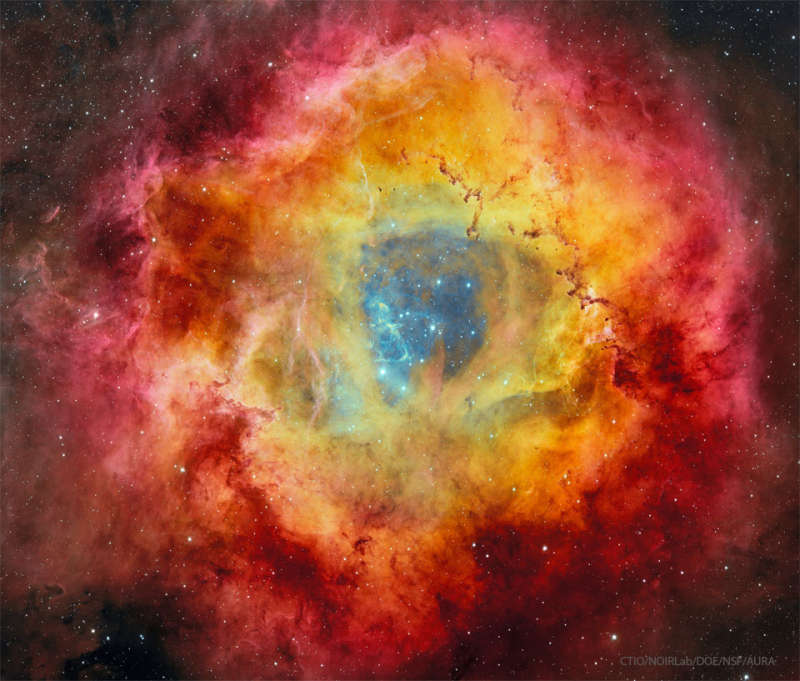
|
Credit & Copyright: CTIO,
NOIRLab,
DOE,
NSF,
AURA;
Processing:
T. A. Rector
(U. Alaska Anchorage),
D. de Martin
(NSFBs
NOIRLab) &
M. Zamani
Explanation:
Would the
Rosette Nebula
by any other
name look as sweet?
The bland New General Catalog
designation of NGC 2237 doesn't appear to diminish the appearance of
this
flowery emission nebula,
as captured by the
Dark Energy Camera (DECam) on the
Blanco 4-meter telescope at the
NSF's
Cerro Tololo Inter-American Observatory in
Chile.
Inside the nebula lies an
open cluster
of bright young stars designated
NGC 2244.
These stars
formed about four million years ago from the nebular
material and their
stellar winds are clearing a hole in the nebula's center,
insulated by a layer of dust and hot gas.
Ultraviolet light from the
hot cluster stars causes the surrounding nebula to
glow.
The Rosette Nebula spans about 100
light-years across, lies
about 5000 light-years away,
and can be seen with a small telescope towards the
constellation of
the Unicorn
(Monoceros).
Open Science:
Browse 3,700+ codes in the Astrophysics Source Code Library
|
January February March April May June July August September October November December |
| ||||||||||||||||||||||||||||||||||||||||||||||||
NASA Web Site Statements, Warnings, and Disclaimers
NASA Official: Jay Norris. Specific rights apply.
A service of: LHEA at NASA / GSFC
& Michigan Tech. U.
Based on Astronomy Picture
Of the Day
Publications with keywords: Rosette Nebula - emission nebula
Publications with words: Rosette Nebula - emission nebula
See also:
- APOD: 2025 September 19 B The NGC 6914 Complex
- APOD: 2025 September 10 B The Great Lacerta Nebula
- APOD: 2025 July 21 B Cats Paw Nebula from Webb Space Telescope
- APOD: 2025 July 5 B Ou4: The Giant Squid Nebula
- APOD: 2025 June 26 B The Seagull Nebula
- APOD: 2025 June 17 B Rosette Nebula Deep Field
- NGC 6164: A Dragon s Egg
